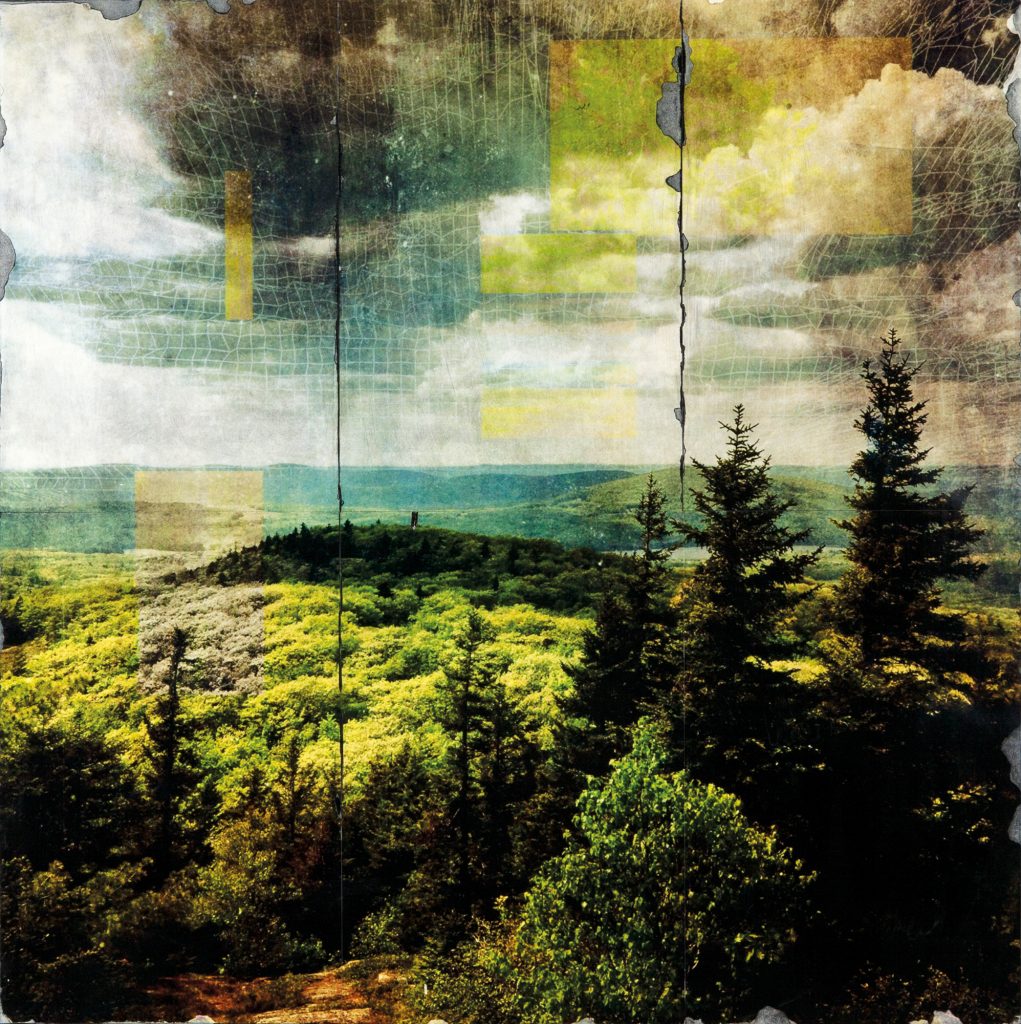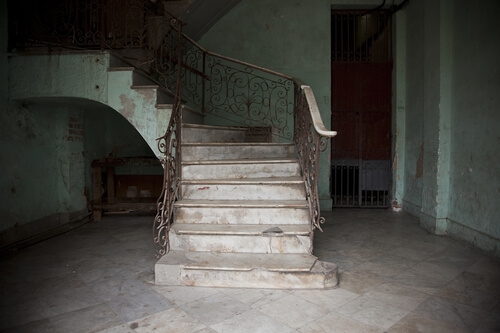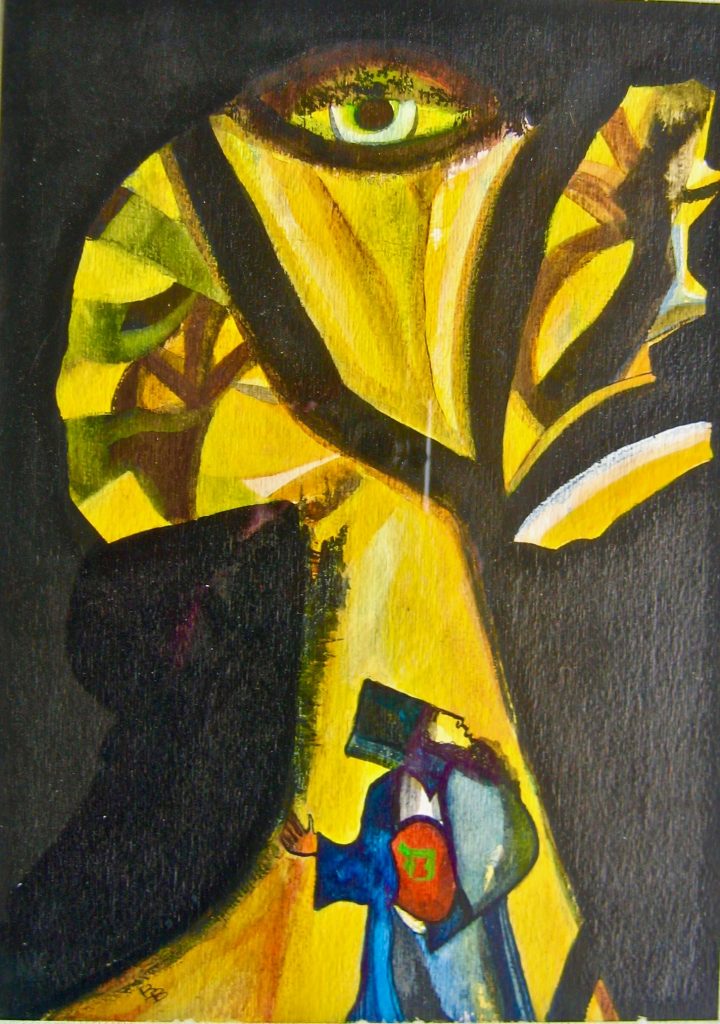The Persistent Documentation of Jonathan Laurence

For nearly the past two decades, Jonathan Laurence has been relentlessly capturing the moments that make up our daily lives. In both his photography and video work, there is a sense that what we are seeing is the artist’s immediate response to the world around him. His images come across as fragments of life, those fleeting scenes of people, places, and things that our memory tries to hold on to, but eventually fade away with time. I spoke with Jonathan in anticipation for his exhibition titled GLTCH at Dowling Walsh Gallery.

Let’s start from the beginning. Where did you grow up? When did you first start showing an interest in art?
I grew up in Rockport, Maine. As a young kid, I was always making things. I went to an alternative middle school and was introduced to black and white photography there. I learned how to roll and process film. My first camera was Holga. So starting pretty young, I had a photosensitivity of things. I always had a camera on me, whether it was a cheap disposable or my Canon Ae-1, or Pentax k1000.
Between the ages 16 and 23, I was on the US Snowboard Team. As a professional snowboarder, I traveled around the world. I always had a camera and was taking shots. But at the time, my photos were not art-based. Rather, I was using photography to capture what I was seeing during my travels.

Where did you go to school? What did you study?
When I decided to leave snowboarding, I came back to Maine and attended the Rockport College at Maine Photographic Workshop. I wanted to pursue a career in photography and the program allowed me to go to school while I worked construction. I had an idea of what I wanted to do with my photography going in, but once in the art school environment, I decided to go in a different direction. I no longer wanted to take straight on shots and started experimenting a little bit. After two years at the Workshop, I transferred to the Art Institute of Boston where I graduated with a BFA.

As a multi-media artist, you’ve created a diverse body of work. Much of your video work are trailers and promos for projects made by other artists and organizations. What is the collaboration process like? How do you capture the vision or message of someone else’s art?
When I was at the Maine Photographic Workshop, I worked in the AV department making shorts that were shown before the classes to introduce the instructor and material. From doing that, I was connected to the photographer Drew Gardner from the UK. We both had similar interests. He was working on these large scale, elaborate fashion shoots and doing crazy things like wrangling water buffalo and alpaca. He wanted someone to document behind the scenes. This was 2005 when web videos really did not exist. I was one of the only people at the time making short form content for the web. I used time-lapse technique to show all the work that went into making these projects. And then he set me up with Phase One. I did a lot of promotional work for them and continued on this commercial track, which was totally opposite of what I had wanted to do in school where my focus was very art-based. I was kind of thrown into the commercial world of making video content.

That’s how I met you. I was working at Poptech. People wanted short form video documentation of their projects, but with a creative expression to it. Instead of the Ken Burns style of there and then documentation, they wanted stop motion video with abstract hand painting to capture the vibe of their project. Regarding collaboration, some of the artists are friends and I get who they are and what their vision is. I am able to take what they want and translate it into video form. Maybe they don’t have the skills or they have only thought about it in one context, and I’ll help them think about it in another context. For the Cig Harvey Book trailer, I animated her still imagery, which ended up turning into another body of work for her. It’s great when a small collaboration leads to another. I have also worked with organizations and artists that I don’t know prior to collaboration- this is how I pay the bills.

It’s amazing to know that you were one of first to make commercial video this way. Yes, the videos were being used to promote something, but they were also visually very different and had aesthetic appeal.

In 2005, YouTube was just starting. When I was working at Poptech, we were sponsored by Yahoo and responsible for streaming content. We were actually working with people at Yahoo to create a Yahoo video channel, but Youtube won out. Looking back, it’s funny because people were like, “Oh, I don’t know about this online video stuff.” And now online video is this huge thing and all the major companies are using shorts for marketing.
Music is a big component in your video features. Why do you think this is? How do you choose it?
I absolutely love music. It has a massive role in life and the creation of things. Just think about watching an action movie without the score. It loses the drama and the effect. A lot of the pieces that I make are not narratives in the traditional sense. They are more experiential, but I find that music helps generate a narrative, which allows the viewer to respond more to the work and what is being said. Music just becomes another tool in the process. There are even times when I am trail running in the morning and listening to a song. I am thinking about an edit in my head in relation to this one song. I am also observing how I running, moving, and seeing things. This all overlaps and becomes part of the creative process.
Your photography work documents social and political issues like immigration reform and community development programs in the Congo. When did start using photography to draw attention to social issues? Can you tell us about a particular project and the circumstances around it?
I started doing social documentation in 2007. Teddy called me and said, “Hey, do you want to meet in Denver tomorrow morning? We have this service employee’s international union contract. I am working on the interviewing and storyboarding, but I could use your video and photo skills.” I jumped on the project. I am driven by a love of capturing people. No matter what the project, I enjoy interacting with people and getting to know them.

We started in Colorado with DOT workers, doing a day-in-the-life of different state employees. This fuelled a want to keep connecting with people and using this medium to realize other people’s lives. I have sat in my office and fantasized about being a FedEx worker and just drive around all day. For me at least, it’s the idea of being able to dip into other people’s lives and careers for a moment. Photography and video allows that to happen – I embed myself and use the lens as this capturing tool.
Really, I try to be present, like a fly on the wall that observes and captures the essence of people. My work in the Democratic Republic of Congo reflects this. My girlfriend runs a non-profit out of the DRC. She hired me to edit a video for the organization, and the next thing I knew, I found myself living in the DRC and photographing the people there. This led to other social and political projects. It’s about utilizing the medium to help other people share their stories and messages.
You also have a group of photos that are described as “self-documentation,” and seem to come from a more personal place. What is the inspiration behind this work?
Before everything became digital, I always traveled with a Polaroid camera. The body of work Selected Memories started out as instant snapshot to capture all that was happening around me, what I was experiencing. I wanted to remember these moments and Polaroid was perfect because it is immediate and you don’t always know what the photos will look like. Then over time, the color fades and shifts, in the same way that memories do. In 2007, I got a Blackberry with a camera and the Facebook app. I was traveling a lot for work and capturing what I was doing and seeing daily. I started uploaded images in the same way that people are using Instagram now. Looking back, it was about finding a home for all the little snippets, or memories. They were super lo-res images, but they were for me – they were images that were personal.

My show at Dowling Walsh Gallery stems from this work. The body of work in the show is very personal – it captures those fleeting moments – the ones you want to savor. Tomorrow, I leave for Aspen to teach a workshop “Life, Art & the iPhone.” I have been persistent about this kind of documentation over the last 10 years. It stems from wanting to be responsive to the world around me, and keeping my eye sharp to these aesthetics, scenes, narratives, and juxtapositions that can create a photo. Something as simple as seeing light on a wall, but it is that gorgeous light that you can’t stop looking at. It is important to stay sensitive to these moments and keep my brain working. And it’s important to maintain a creative energy and not let yourself fall into a creative void where you think that everything is hard. You don’t want to do anything because it has become too difficult. But if I keep going, there is always something that I can do with the material – I could run thousands of images into a linear time-lapsed video spanning the last 10 years or simply print them all out. New apps and software give us more opportunities to explore creative expression, which is really fun and exciting.

Travel seems to play a major part in your work. Why is travel important to you? How do your experiences influence your artistic sensibilities and ultimately the work you make?
I enjoy the feeling that comes with travel. I find comfort in the discomfort of traveling. Some people get nervous about being unsure where they are going and what it is going to be like there. I am the complete opposite and want to fly halfway across the world with no idea of what is going to happen. It goes along with my interest in keeping a sharp eye and continual documentation. If you are moving around and in places that are foreign to you, your senses are so much more heightened. One can think of traveling as akin to taking drugs. You become more sensitive to things because it is not of your normal. I love having a stable job, but the thought of a routine scares me sometimes. There’s safety in routine, but it can be totally inhibiting in allowing you to think outside of normal. Traveling also lets me see how people are handling various design projects and issues of user experience, what works and what doesn’t work, around the world.
While many artists eschew digital technology in their work, you embrace it. I am thinking about your recent project ‘Selected Memories’. Can you tell me more about it?
I printed out images, adhered them to wood panel, and then did various treatments to the surface to make them unique and one-of-a-kind. They are no longer trapped in the phone, or serial, or floating around on my computer. Rather, they become a tangible object you can touch. A lot of the treatments that I do to the surface make the images have a worn, vintage feeling to them just like Polaroid. There’s also the erosion process that happens when things are left out over time – natural elements like wind and sand take effect. I am trying to speed up the effects of time to give the image a look that it has been around for a while, even if I took it on my phone two days ago and just printed it out.
How do you view technology and digital media’s role in contemporary art practice?
I think that it is a really interesting time right now because everyone wants to do something that incorporates digital in some way. Or they are going in the total opposite direction with the resurgence of DIY and handmade, or DIY of contemporary craft. I am really interested in the idea of DIY hacks. We now have insane amounts of technology that are becoming trash. People with the creativity and knowledge can take these discarded elements and fuse them together to make new things. It can be simple like taking those musical greeting cards and reprogramming them to play different songs. At the same time, artists are making incredible installations with cameras that remap time and space. It’s more scientific – artists are collaborating with scientists. But I have also seen data-driven work where the idea is really cool, but the aesthetics fall short. The whole thing is lost because no one can really engage with the work whether it is being presented in an artistic or scientific context.

At the Center for Maine Contemporary Art, the museum I work at right now, we have this artist, Rollin Leonard. One of his pieces that I really love is this giant quilt. It starts from a digital place – he photographed his girlfriend’s face close up in high resolution. He printed the image out and transferred it to cotton squares. He then sent the squares to a machine quilting company in Portland, ME, which sewed the squares together and put a constellation print on the back to make this giant quilt. It’s great, especially when you think about it within the context of murals and wall tapestries, art traditions that have been around for hundreds of years.
You have a really cool day job as Creative Director at the Center for Maine Contemporary Art. What does your job entail? Are there any particular projects or programs that you are particularly proud of?
People really like Maine, but only come for 3 months out of the year because it gets really cold. After growing up here, leaving, and then coming back, I really wanted to make Maine a cool destination. A large part of my job is thinking about new ways of approaching this issue. There’s something really special about this place and people understand that. During the summer, we have a lot of big name New York artists living around the area where the Center is located.
My work focuses on trying to get an overall user experience of the Center and consider new strategies for showing the artwork we have. For example, I incorporate my love and background in technology to increase the reach of the Center and improve it aesthetically. When I started, they did not have a full-time designer. Everything was all over the place and there was no concept of branding. I have worked to streamline everything, but in a creative sense to show that the Center in on the cutting-edge, but in a more formal, approachable way. The graphics are really clean and simple. In turn, this offers people a better experience of the work, even if the work is not something they are used to seeing. They can digest it while stepping out of their comfort zone. And there’s the great part of working with artists to put together art parties where people can come to have fun and connect with the Center.
Will you be doing any traveling in the near future? Do you have any projects coming up?
I’m heading to Colorado to teach a course in Aspen. While I am in Colorado, I will also being taking a few days to meet up with an old friend who lives off the grid in a teepee on the backside of a mountain. This is always my big summer reboot.
In the first part of November, I will be taking at trip to check out this architectural space and artist residency on Fogo Island in Labrador, Canada. I have also been working on developing an artist residency on a container ship. Last February, I went from Portland, ME to Reykjavik, Iceland on the ship and worked with the company Eimskip, which up until the 1970s allowed free passage to and from Europe to artists in exchange for a work of art. The company moved its headquarters to Maine. We want to try and bring back the program, but through a curated process. Named Timber + Ice, the program invites artists from all disciplines to apply for the chance to have an eleven-day experience of being out in middle of the North Atlantic. In February, Anneli Skaar, the woman who I am working with on Timber + Ice, and I are planning a trip to Greenland in order to keep the momentum up. We are not sure what we are going to do just yet. But my grandfather was stationed in Greenland during World War II. I inherited all of his slides of the Air Force base and surrounding landscape. There are a lot of images of nickel-plated planes with pin-up girls on the side – this may be more of a personal project. But Anneli is a great writer and painter and we hope something collaborative comes out of the trip. We are not even sure why we are going, but it just seems like the right thing to do.









Responses